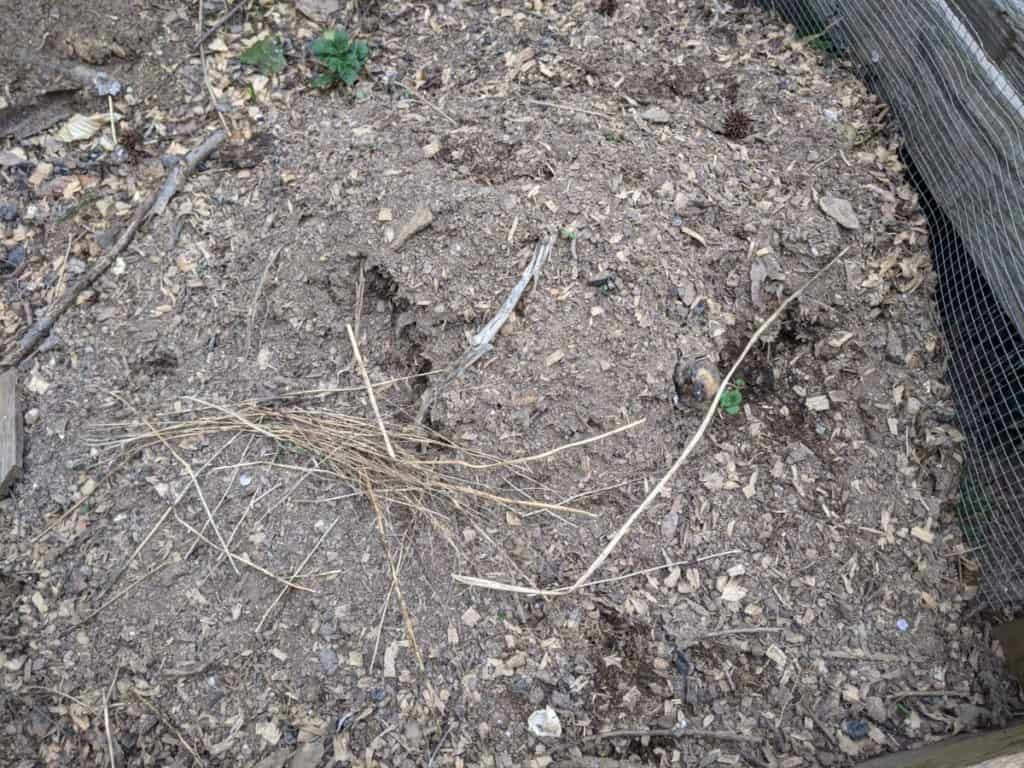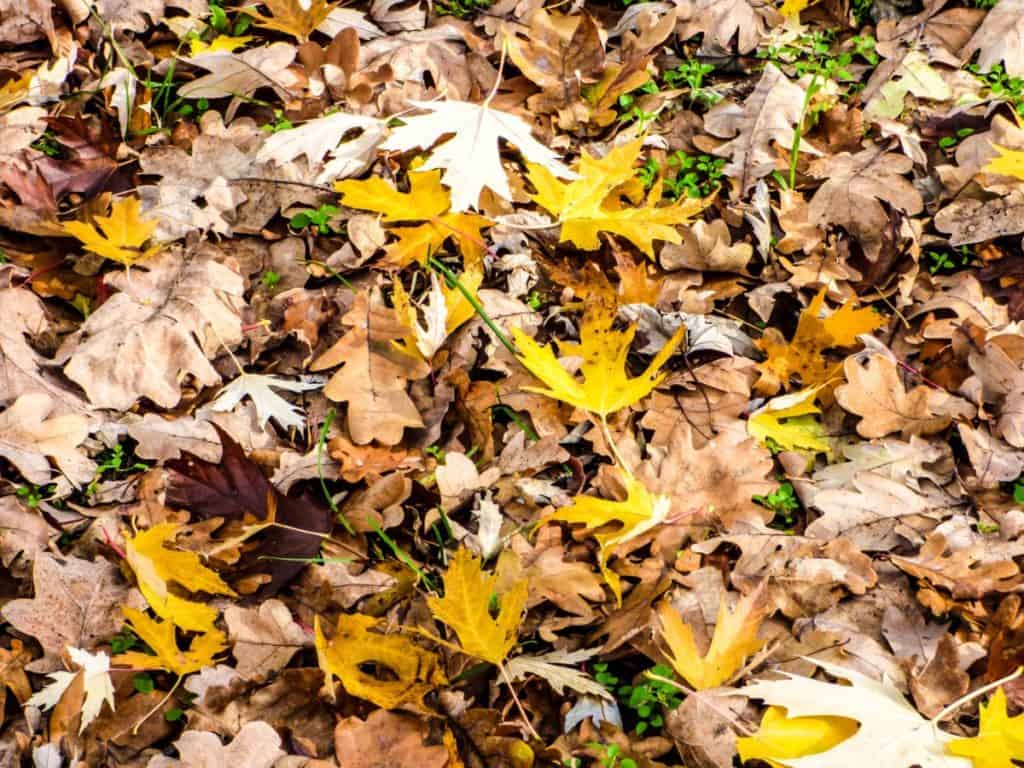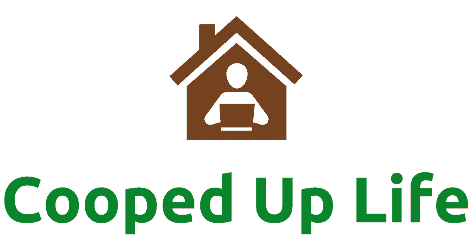
Composting statistics show that there are numerous advantages of using compost in your garden, so much so that using compost should be considered a requirement for a thriving garden.
As compost breaks down, it allows your soil to maintain its optimal soil structure and balance, allowing your garden to breathe and retain water, nutrients, and air.
If you’ve noticed mold forming on your compost heap and it has you feeling concerned, rest assured that there’s a (scientific) reason for that.
Mold appears naturally in a variety of colors and textures. When mold forms on compost, it is typically seen as an indication that the compost is successfully decomposing. The formation of mold is a direct result of microorganisms in the compost, such as bacteria or fungi, that play a vital role in the composting cycle.
While the formation of mold on your compost is inevitable, it is essential that you are informed about the variants of mold and how to identify them. Many different factors determine which mold variant will develop in your compost, such as the materials you are using therein.
While moldy compost is generally seen as a sign of healthy decay, it is crucial that individuals are aware of how to incorporate it into their garden successfully.
Is Molding Compost Dangerous to Use at Home?
When it comes down to the formation of mold, many people have negative associations with this fungal growth. Mold has, in a way, come to represent food going off. Have you ever wanted to make a sandwich and found the bread has already developed mold?
Chances are you tossed the rest of the loaf out due to the common misconception that mold is always harmful.
Various molds have a wide array of surprising uses in modern life, from cheese production to the pharmaceutical production of multiple medicines. When it comes to mold forming on compost, it is more often than not a sign that the decomposing stage of the composting process is successfully underway!
However, different strains of mold on your compost could have different implications.
Compost that is in the process of decomposing and has formed mold is safe to use in your garden at home – if you’re aware of the different types and what each tells you about your compost. Identifying the type of mold forming in your heap is simple and will give you valuable insight into how to proceed with your compost.
How to Identify Different Compost Molds
In order to successfully identify the mold that is growing on your compost, you’ll need to get a good look at it.
Mold spores that hang in the air can cause allergic reactions in some individuals, so caution through the use of gloves and a mask while working with molded compost is advised.
While the chance of contracting infections like aspergillosis from fungal inhalation is low, immune-compromised individuals should keep this in mind when working with molded compost or materials.
Depending on the amount of mold forming on your compost heap, it would further be advised to keep pets away from this compost as consumption of it could have serious health implications.
There are three common colors associated with the variants of mold that form on the compost. It is good to be informed about these types and any implications they may have on your compost.
Perhaps the most common color associated with mold – or at least the first image that will pop into most people’s brains – is green mold. This mold variant is most commonly seen in conjunction with food wastage, especially in foods such as bread, fruits, and vegetables.
This type of mold spreads quickly due to its digestion of nitrogen-carbon compounds in foods prone to green mold.

If you see the formation of green mold on your compost, it is a sign of too much moisture in your compost heap or bin. This can be remedied by maintaining a better balance of dry to wet ingredients that make up your compost.
If you spot pink mold forming during the composting process – which can often take on more of an orange hue – you need to be more conscious of what is going into your compost. Pink mold is often a warning sign that chemicals, such as cleaning products used in the home, are making their way into your compost.
This interrupts the decomposition process by destroying the very microorganisms that make the decomposition process possible. It is important to ensure that only natural, decomposable material finds its way into your compost bin.
When the natural matter is used in your compost pile or bin, with the correct ratio of dry to wet materials, the mold that naturally forms while the matter decomposes will be white in color.
White mold is an indicator that your compost is successfully decomposing, typically seen on the woody matter in the compost. This is due to the presence of a bacterium, actinomycetes, which is beneficial to the breakdown of organic materials. The sight of white mold growing in your composting bin should not alarm you.
It is possible to water your compost pile to aid in the decomposition process. This is due to the fact that microorganisms responsible for the breakdown of organic material require a moist environment.
As a rule of thumb, composting materials should ideally be 50% water. Once the decomposition stage of the composting process is complete, the mold will naturally die out, and you’ll be able to use the compost safely.
What Can I Put in My Compost Pile?
If you’re struggling to decide which materials to incorporate into your compost heap and which to leave out, then these lists are for you. Two types of matter make up the perfect compost: brown material and green material.
Brown materials include dry or woody matter, while green materials include recently growing wet matter.

Brown Material for Your Compost
- Autumn leaves
- Bits of wood
- Sawdust
- Wood ashes
- Paper and cardboard (including toilet paper rolls!)
- Straw
- Cotton fabric

Green Material for Your Compost
It is acceptable to use certain moldy food waste in your compost. These items include:
- Fruits and vegetables
- Coffee grounds
- Bread and grains
Other green material that can be added includes:
- Grass and plant trimmings
- Recently pulled weeds
- Teabags
- Eggshells
- Seaweed
- Horse, cow, sheep, chicken, and rabbit manure
Matter You Should Not Add to Your Compost
While it is admirable to recycle wastage around the house, some things are better left as waste. The incorporation of certain products into your compost could pose possible health risks. Apart from eggshells, no animal products should go into your compost.
These matters, especially when decomposing, are susceptible to bacteria that could carry potential health risks.
The composting of meat and dairy products also attracts animals to the compost pile – either feral animals or a pet that could end up ill – as well as pets like flies. Flies around your compost should be a warning sign that animal products may have been added to the compost.
To prevent animals from being lured to your compost pile, waste that stems from animal products, including bones, should be avoided. These materials counteract the moisture needed for the successful decomposition of matter by overheating your compost.
Conclusion
The formation of mold in compost is a direct result of microorganisms in the compost, such as bacteria or fungi, that play a vital role in the decomposition cycle. Different molds, which can be told apart through their colors, reveal vital information about your compost.
The formation of green mold in your compost is a sign of too much moisture in your compost, while pink mold hints at the compost’s exposure to cleaning chemicals. White mold is an indicator of healthy decomposition, which results from a correct balance of wet and dry materials.
You should always be conscious of what goes into your compost and ensure the correct ratio of brown and green materials. It is also important to avoid the use of animal products in compost, which could post health risks and attract unwanted animals and pests to your home.
By seeing what the mold on your compost is telling you and ensuring a correct balance of composting materials, you can rest assured that your garden will continue to thrive!

